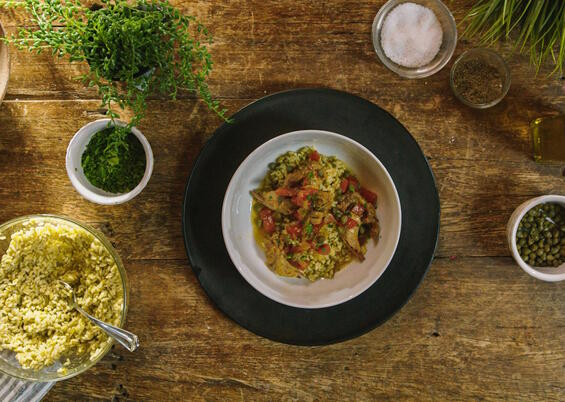Where to hunt
Cottontail rabbits are abundant across the Massachusetts landscape. Cottontails thrive in habitats with thick vegetation that provides both cover and food. Rabbits can be found in young forests (sometimes called early successional forests), abandoned or overgrown farm fields, swamps and swamp edges, overgrown stone walls, and brushy hedgerows. Many Wildlife Management Areas contain ideal habitat, so they are a great place to start. Use MassWildlife’s Lands Viewer to find a WMA near you.
Hunting tips
While many rabbit hunters hunt with dogs, you don’t need a dog to be successful.
- Tracks left in the snow can reveal common travel routes and feeding areas.
- Rabbits are often less active during the day and may be taking cover in thickets. Don’t be afraid to literally beat the brush to get them up and moving.
- Cottontails are most active at dawn and dusk, hunting during these times may create better opportunities to see and target rabbits in the open.
- Shotguns work great in the brush for rabbit hunting, but small caliber rimfire rifles (e.g., .22 LR) are also commonly used and quite effective.
Hunting snowshoe hare: Techniques for hunting snowshoe hare are similar to rabbit hunting. Hares are more likely to be found in the northern portions of central and western Massachusetts. Keep in mind that snowshoe hares’ fur changes to white in the winter, which can be an advantage or disadvantage for hunters depending on the weather.
Recipe: Rabbit cacciatore over pesto orzo

Servings: 4 servings || Cook Time: 2 ½ hours
Ingredients
- 1½ pounds of rabbit
- Kosher salt
- Freshly cracked pepper
- ¼ cup of all-purpose flour
- 3 tablespoons of olive oil, separated
- 1 medium onion, chopped
- 8 ounces of mushrooms, sliced
- 2 large cloves of garlic, minced
- ½ cup of chardonnay or Chianti wine
- 3 cups of diced ripe tomatoes
- 2 sprigs of fresh thyme
- 1 sprig of fresh rosemary
- Pinch of saffron
- 1 bay leaf
- Reduced-sodium chicken broth, about 2 cups
- 1 tablespoon of capers
- Chopped parsley
- 1 box of orzo pasta
- Prepared basil pesto or homemade
Steps
- Season and dredge rabbit
Cut rabbit in serving-size pieces. Pat dry with paper towels and sprinkle with salt and pepper, to taste. Next, lightly dredge seasoned rabbit in flour, shaking off excess. - Brown rabbit and set aside
In the same pan, add an additional tablespoon of oil, onion, bell pepper and a pinch of salt. Sauté until softened, but do not brown. - Onions, mushrooms, and spice
Lower heat to medium. Add onion and a pinch of salt to the skillet; add more oil if necessary. Cook onion for 5 minutes, stirring occasionally, then add mushrooms with a pinch of salt. Brown mushrooms on both sides, about 5-7 minutes. Add garlic, thyme, rosemary and bay leaf, and cook for 30 seconds. Do not allow garlic to brown. - Wine, tomatoes, and rabbit
Pour wine into the pan with saffron. Allow wine to simmer until mostly evaporated. - Prepare and bake
Add diced tomatoes to the pan and then return rabbit to the pan. Pour in enough chicken broth to submerge the rabbit halfway. Cover the pan with aluminum foil and then fit the lid onto the pan as tightly as you can. Bake at 325° in oven for about 2 hours, or until tender. Check halfway through to ensure sufficient liquid—if not, add more broth. Thirty minutes before taking dish out of the oven, remove the foil to allow some steam to escape to thicken sauce. - Prepare orzo
To prepare orzo, cook according to package directions. Drain and return to pan. Toss with olive oil, salt, pepper and pesto to taste. Taste cacciatore sauce for seasoning. - Garnish and serve
Garnish with chopped parsley and capers. Serve rabbit pieces over orzo with some sauce.
Notes from the Chef: This dish is traditionally served with chicken, but it just so happens that it’s also delicious prepared with rabbit. After all, cacciatore does mean “hunter” in Italian.
Chef Bio - Jenny Nguyen-Wheatley
Jenny, who immigrated to the US from Vietnam, was first introduced to hunting in college and started a cooking website, Food for Hunters. Since then, Jenny has written for numerous hunting and outdoor magazines, and co-authored – with her husband, Rick Wheatley, – the book, Hunting for Food: Guide to Harvesting, Field Dressing and Cooking Wild Game.